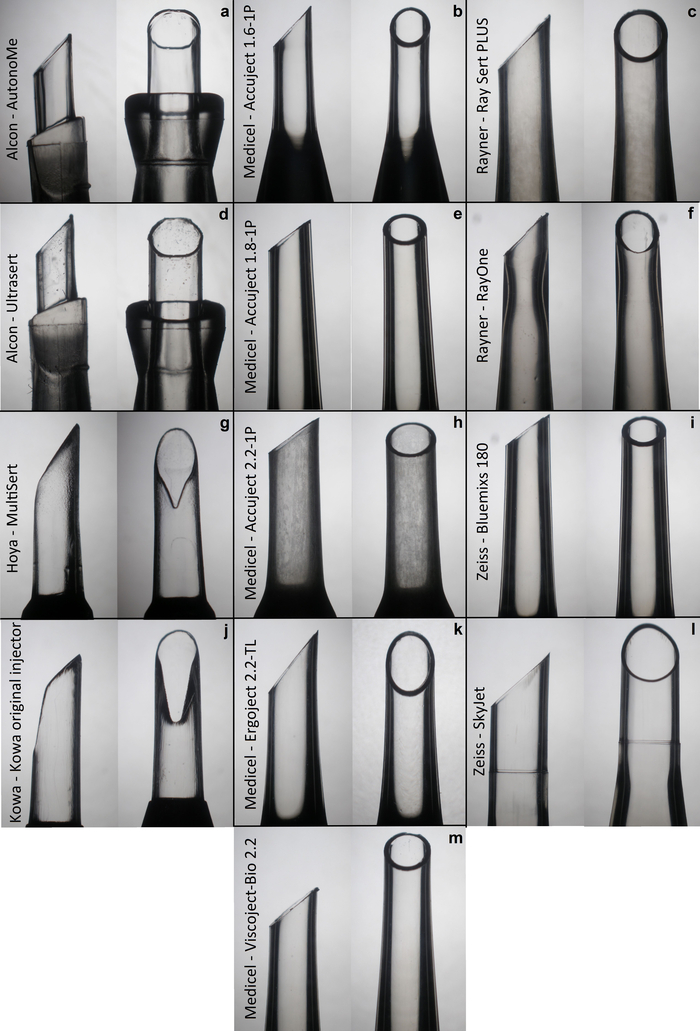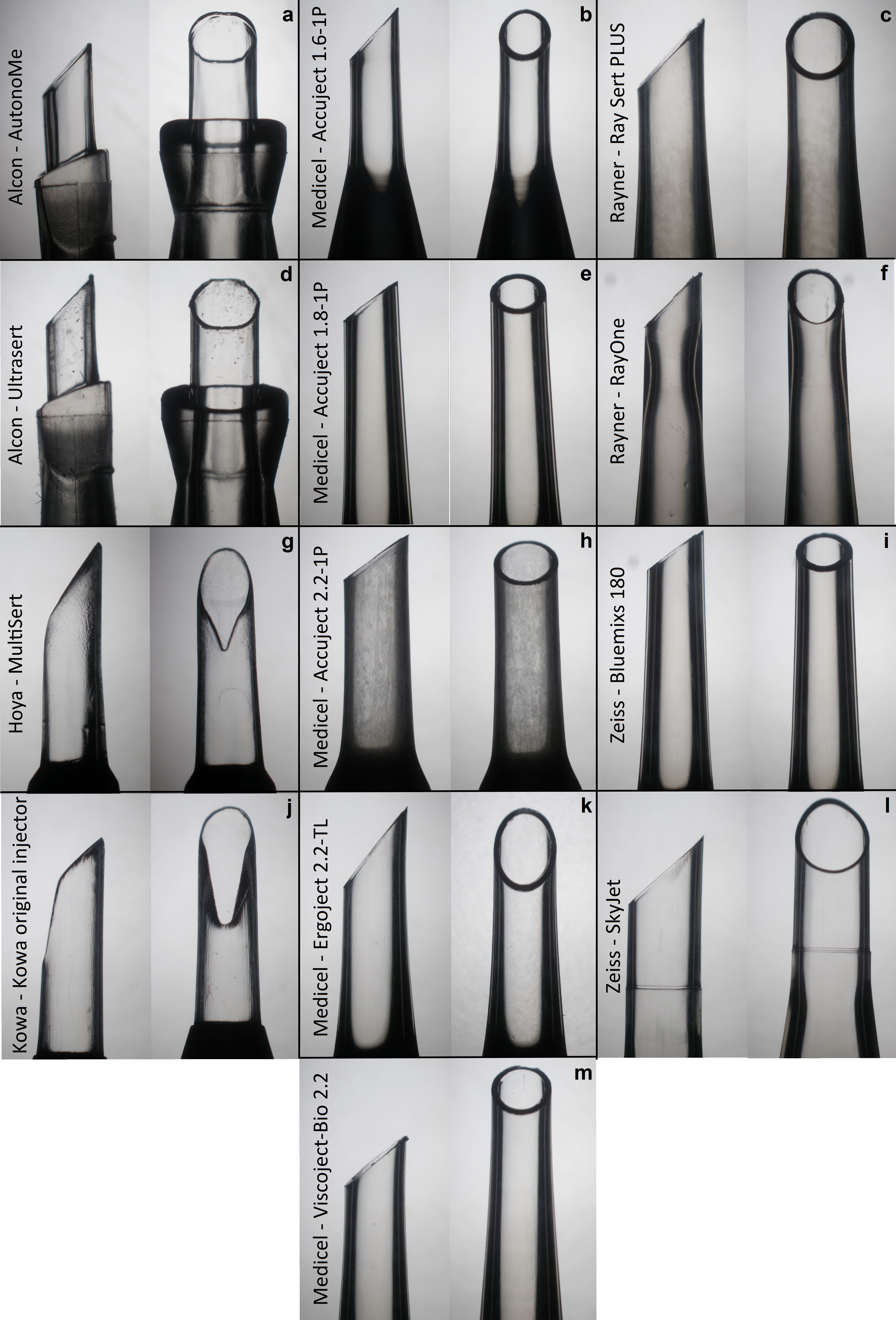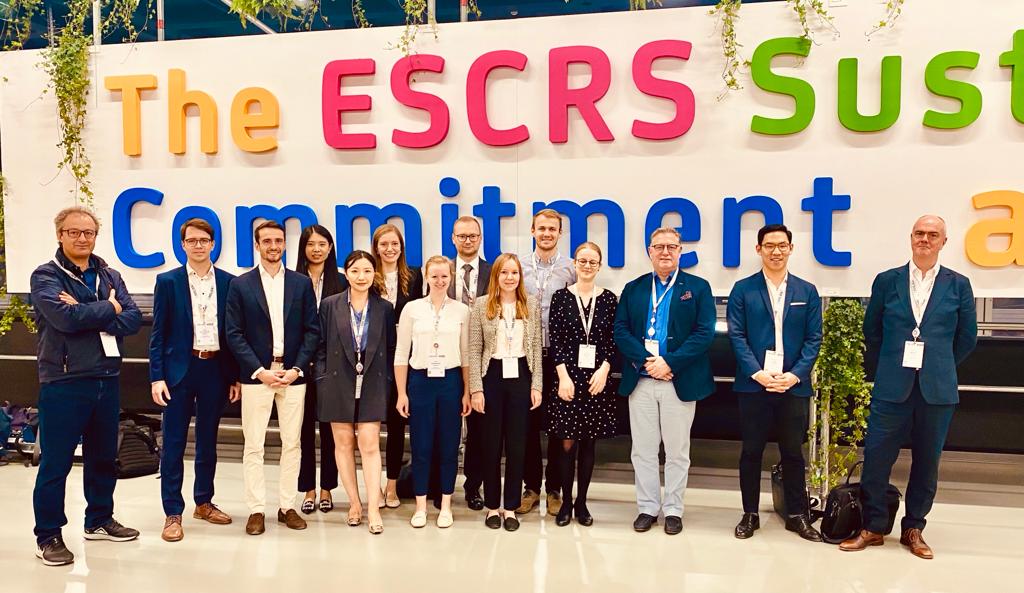Incision size recommendations - under the microscope.
Heidelberg, 16 February 2023. We proudly announce the publication of a novel paper in the open access journal Scientific Reports.
Background
Inserting IOL injector nozzles into the eye’s anterior chamber to implant an IOL is associated with incision enlargement which can lead to a higher risk for astigmatism and endophthalmitis. Many manufacturers of IOL injectors do not provide any recommendation on preoperative incision size or provide openly accessible evidence on how they determined their recommended incision size.
What we did
 We critically analyzed the manufacturers’ incision size recommendations of thirteen different IOL injector models from six manufacturers. With an incision gauge, we measured incision size right before and immediately after IOL injection. In total, 499 insertions of IOL injector nozzles were performed into a clear corneal incision using porcine cadaver eyes. The main endpoints of our analysis were intraoperative incision enlargement and postoperative incision size. Additionally, we proposed a standardized algorithm on how to determine the optimal preoperative incision size for each IOL injector model.
We critically analyzed the manufacturers’ incision size recommendations of thirteen different IOL injector models from six manufacturers. With an incision gauge, we measured incision size right before and immediately after IOL injection. In total, 499 insertions of IOL injector nozzles were performed into a clear corneal incision using porcine cadaver eyes. The main endpoints of our analysis were intraoperative incision enlargement and postoperative incision size. Additionally, we proposed a standardized algorithm on how to determine the optimal preoperative incision size for each IOL injector model.
What we found
We started in every case with the company’s recommended incision size and found that we had to intraoperatively enlarge it in all of our corneal incisions. This intraoperative incision enlargement was often significantly larger when we started with a small compared to a larger incision. In a preoperative 2.4 mm sized incision, the maximum postoperative incision size we found was 3.0 mm.
Five injectors needed to have a significantly larger preoperative incision size than the manufacturers’ recommended incision size - with an average difference of 0.3 mm when applying our algorithm.
Conclusion
In all cases, the manufacturer’s recommendation proved to be more optimistic than realistic. We showed that incision size recommendations require to be skeptically accepted by ophthalmic surgeons. We recommend that manufacturers enable and gather more evidence-based clinical practice data to support their recommendations. In the future, IOL injector manufacturers ought to transparently reveal, for each of their injectors, how they determined the preoperative incision size.
To read our paper
How to cite our paper
Friedrich, M., Auffarth, G.U. & Merz, P.R. Experimental analysis of recommended corneal incision sizes in cataract surgery using 13 intraocular lens injector systems. Sci Rep 13, 2659 (2023). https://doi.org/10.1038/s41598-023-29497-w
We started in every case with the company’s recommended incision size and found that there was intraoperative incision enlargement in all of our corneal incisions. This intraoperative incision enlargement was often significantly larger when we started with a small compared to a larger incision. In a preoperative 2.4 mm sized incision, the maximum postoperative incision size we found was 3.0 mm.
Five injectors needed to have a significantly larger preoperative incision size than the manufacturers’ recommended incision size - with an average difference of 0.3 mm when applying our algorithm.
Conclusion
In all cases, the manufacturer’s recommendation proved to be more optimistic than realistic. We showed that incision sizerecommendations require to be skeptically accepted by ophthalmic surgeons. We recommend that manufacturers enable and gather more evidence-based clinical practice data to support their recommendations. In the future, IOL injector manufacturers ought to transparently reveal, for each of their injectors, how they determined the preoperative incision size.
To read our paper
How to cite our paper
Friedrich, M., Auffarth, G.U. & Merz, P.R. Experimental analysis of recommended corneal incision sizes in cataract surgery using 13 intraocular lens injector systems. Sci Rep 13, 2659 (2023). https://doi.org/10.1038/s41598-023-29497-w
 Donald Munro
Donald Munro 
 We're Recruiting!
We're Recruiting!